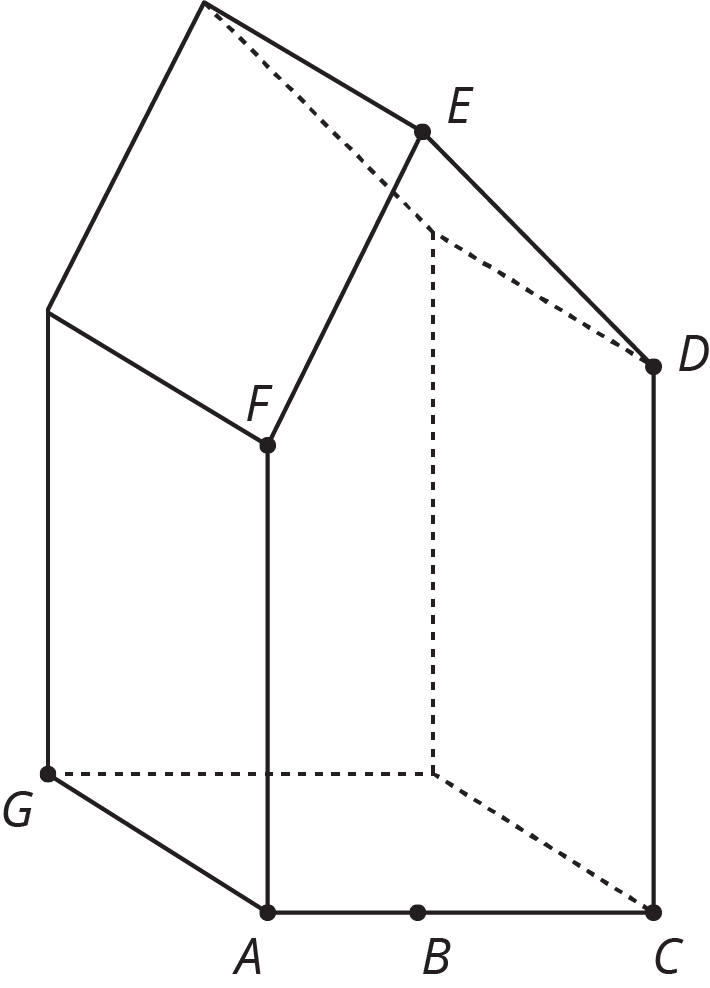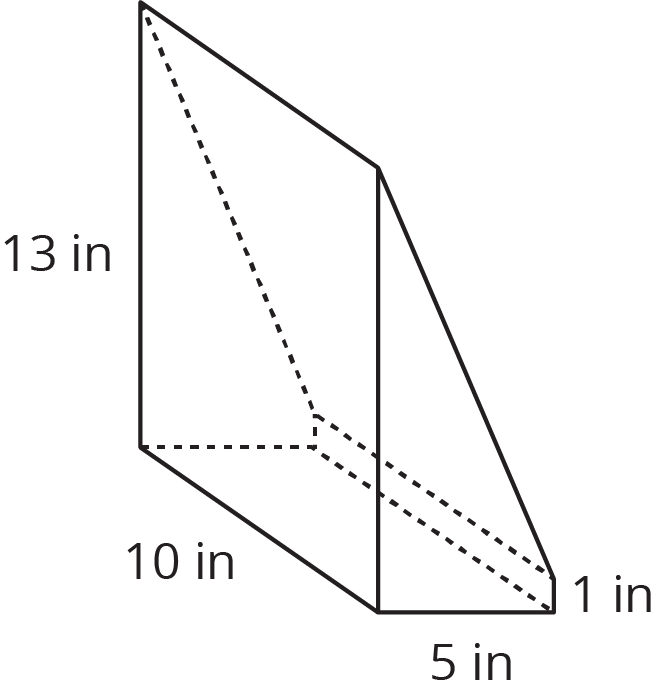Lesson 15
Decomposing Bases for Area
Problem 1
You find a crystal in the shape of a prism. Find the volume of the crystal.
The point \(B\) is directly underneath point \(E\), and the following lengths are known:
- From \(A\) to \(B\): 2 mm
- From \(B\) to \(C\): 3 mm
- From \(A\) to \(F\): 6 mm
- From \(B\) to \(E\): 10 mm
- From \(C\) to \(D\): 7 mm
- From \(A\) to \(G\): 4 mm

Solution
For access, consult one of our IM Certified Partners.
Problem 2
A rectangular prism with dimensions 5 inches by 13 inches by 10 inches was cut to leave a piece as shown in the image. What is the volume of this piece? What is the volume of the other piece not pictured?

Solution
For access, consult one of our IM Certified Partners.
Problem 3
A triangle has one side that is 7 cm long and another side that is 3 cm long.
-
Sketch this triangle and label your sketch with the given measures. (If you are stuck, try using a compass or cutting some straws to these two lengths.)
-
Draw one more triangle with these measures that is not identical to your first triangle.
- Explain how you can tell they are not identical.
Solution
For access, consult one of our IM Certified Partners.
(From Unit 1, Lesson 17.)Problem 4
Select all equations that represent a relationship between angles in the figure.

\(90-30=b\)
\(30+b=a+c\)
\(a+c+30+b=180\)
\(a=30\)
\(a=c=30\)
\(90+a+c=180\)
Solution
For access, consult one of our IM Certified Partners.
(From Unit 1, Lesson 12.)